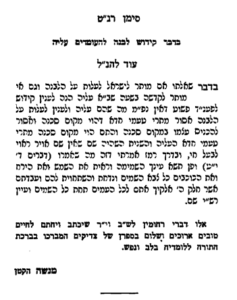Drug Prohibition Is Surreal
The War on Some Drugs
Doug Casey’s International Man
February 13, 2017
Drugs are a charged subject everywhere. Longtime readers know that although I personally abstain from drugs and generally eschew the company of users, I think they should be 100% legal.
Few people consider how arbitrary the current prohibition is; up until the 1920s, heroin and cocaine were both perfectly legal and easily obtainable over the counter. Some people “abused” them, just like some today “abuse” fat and sugar (because they’re enjoyable).
But drugs are no more of a problem than anything else; life is full of problems. In fact, life isn’t just full of problems; life is problems. What is a problem? It’s simply the situation of having to choose between two or more alternatives. Personally, I believe in people being free to choose, and I rigorously shun the company of people who don’t.
Hysteria and propaganda aside, the fact is that most recreational drugs pose less of a health problem than alcohol, nicotine, or simple lack of exercise.
Conan Doyle’s Sherlock Holmes (of whom I’m a great fan) was an aficionado of opium products. Sigmund Freud enjoyed cocaine. Churchill is supposed to have drunk a quart of whiskey daily. Dr. William Halsted, the father of modern surgery and co-founder of Johns Hopkins University, was a regular user throughout his long and illustrious career, which included inventing local anesthesia after injecting cocaine into his skin.
Insofar as recreational drugs present a problem, it arises partly from overuse, which is not only arbitrary but can be true of absolutely anything. The problem comes, however, mainly from the fact that they’re illegal.
Alcohol provides the classic example. It wasn’t much of a problem in the US before the enactment of Prohibition in 1920, and it hasn’t been one since its repeal in 1933. Making a product illegal artificially and unnecessarily turns both users and suppliers into criminals.
Because illegality makes any product vastly more expensive than it would be in a free market, some users resort to crime to finance their habits. Because of the risks and artificially reduced supply, the profits to the suppliers are necessarily huge—not the simple businessman’s returns to be had from legal products.
Just as Prohibition of the ’20s turned the Mafia from a small underground group of thugs into big business, the War on Drugs has done precisely the same thing for drug dealers. It’s completely insane and totally counterproductive.
Frankly, if you want to worry about drugs, it would be more appropriate to be concerned about the scores of potent psychiatric drugs from Ritalin to Prozac that are actively pushed in the US, often turning users into anything from zombies, to space cadets, to walking time bombs. But that’s another story more relevant to address at some point—likely years in the future when it’s again time to consider whether US drug stocks are buys.
The whole drill impresses me as being so perversely stupid as to border on the surreal. Insofar as the Drug War diminishes the supply of product, it raises prices. The higher the prices, the higher the profits. And the higher the profits, the greater the inducement to youngsters anxious to get into the game. The more successful it is in imprisoning people, the more people it draws into the business.
Meanwhile, a trumpeted “success” tends to increase funding from the US government. Some of that money succeeds in driving up prices to the benefit of producers, but a lot of it finds its way into the pockets of officials. That further entrenches corruption at all levels.
The only answer to the War on Drugs is the same as that to the equally stupid and destructive War on Demon Rum fought during the ’20s—a repeal of prohibition.
These are arguments entirely apart from the most important one, which deals with ethics. The question is really whether you have a right to control your own body and what you ingest. There’s little question that caffeine, cocaine, nicotine, heroin, alcohol, marijuana, sugar and a thousand other things aren’t good for you, at least not in quantity. But I can’t see how that’s anybody’s business but your own. Once it becomes a matter of state concern, then everything becomes an equally legitimate subject of state attention. Which is pretty much where we are today—well on the way to a police state.
Reprinted with permission from Doug Casey’s International Man.
From Lewrockwell.com, here.

